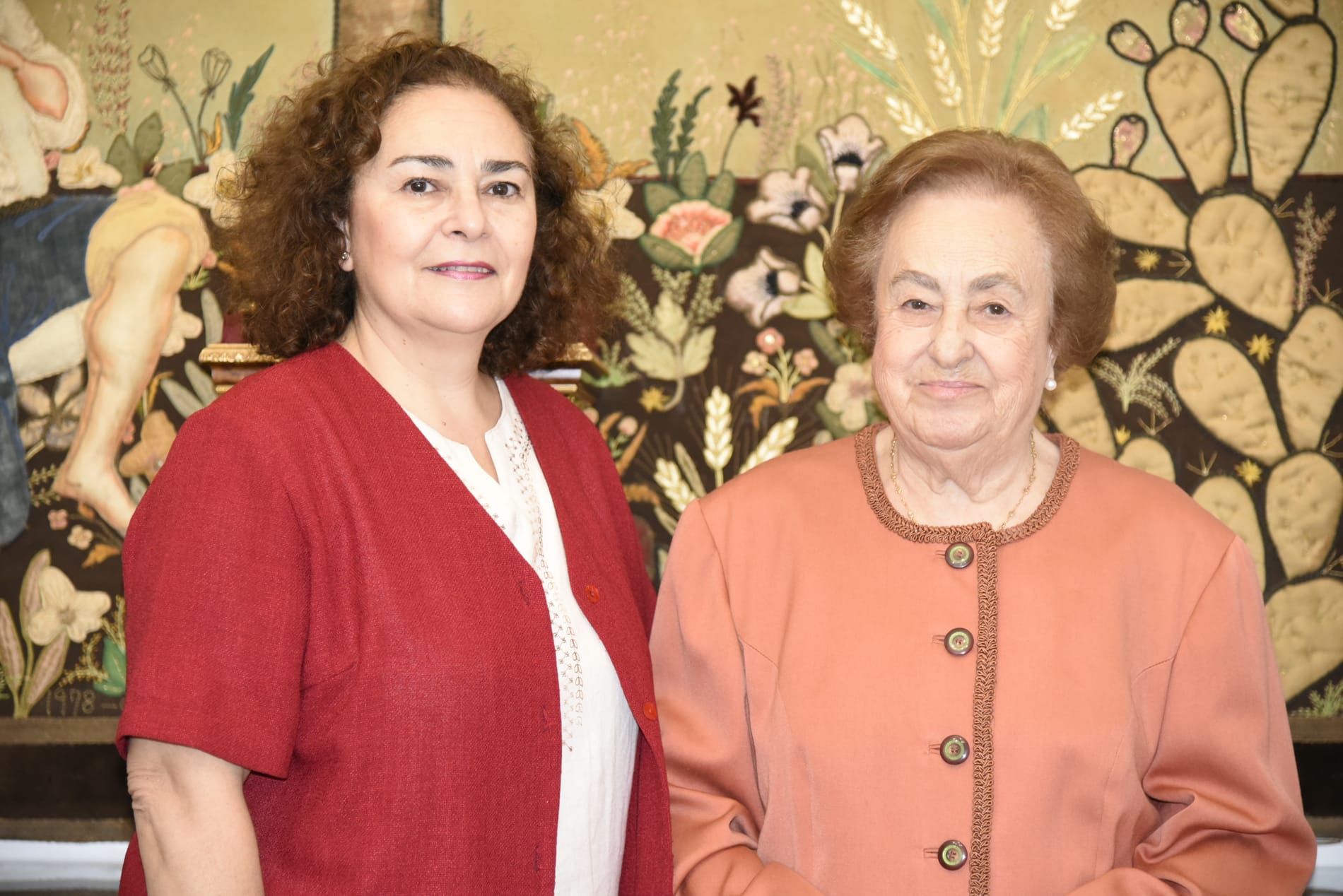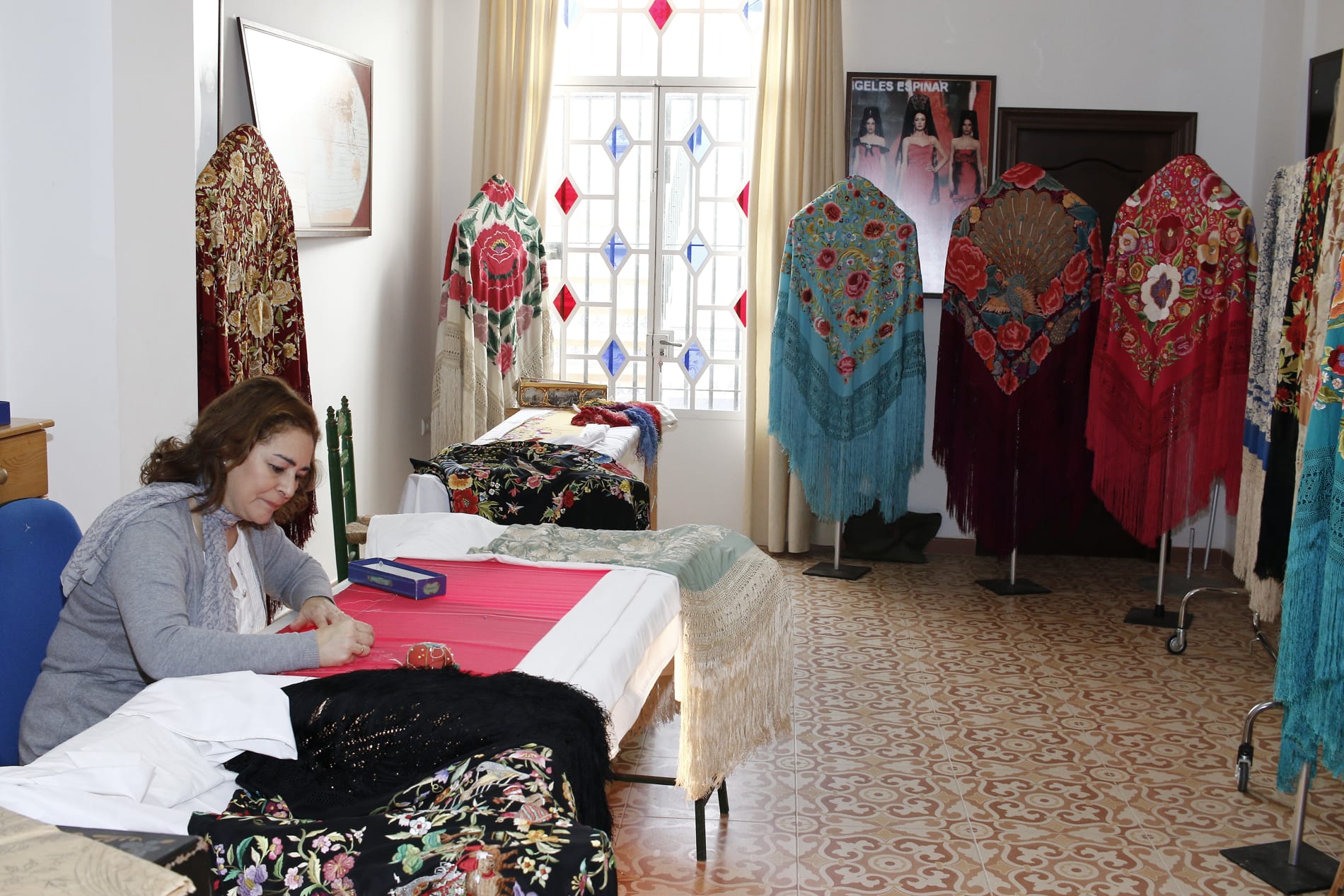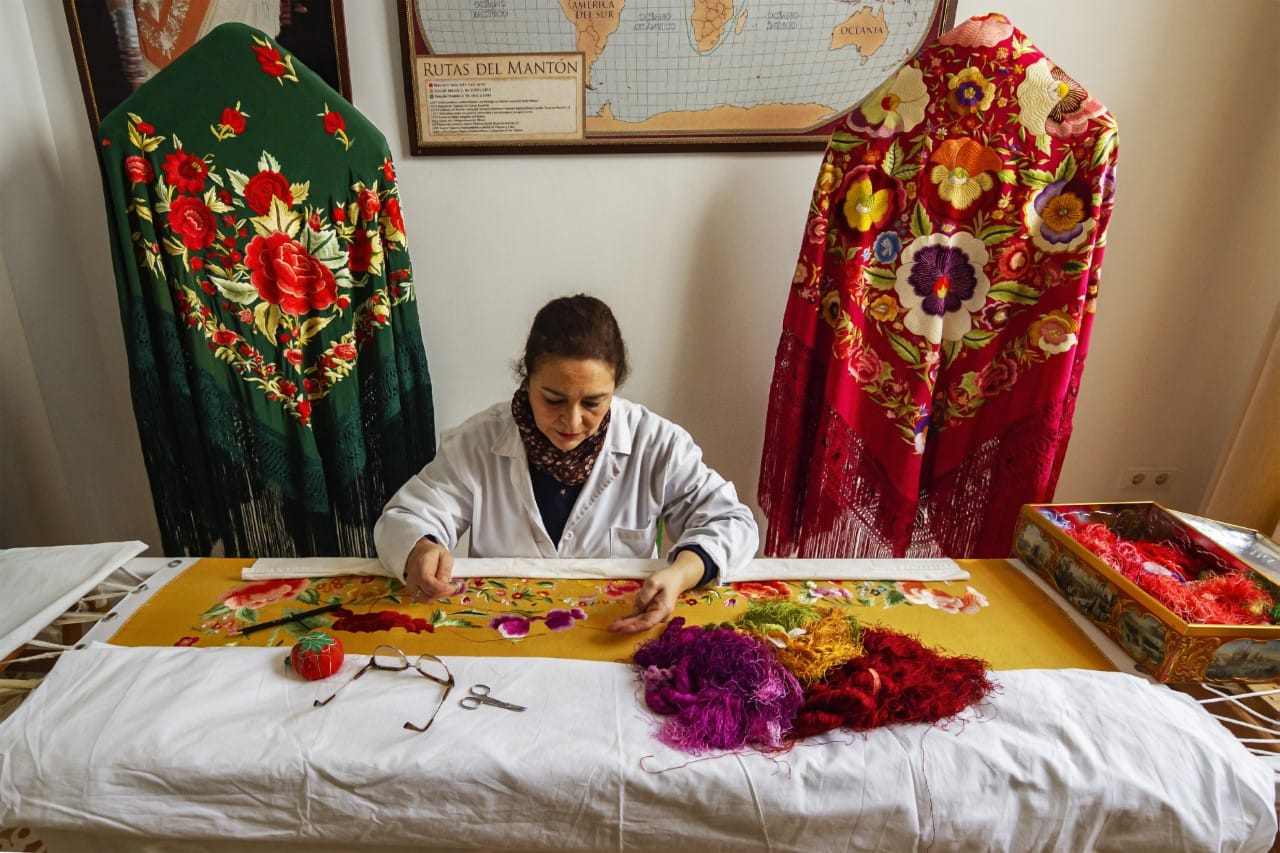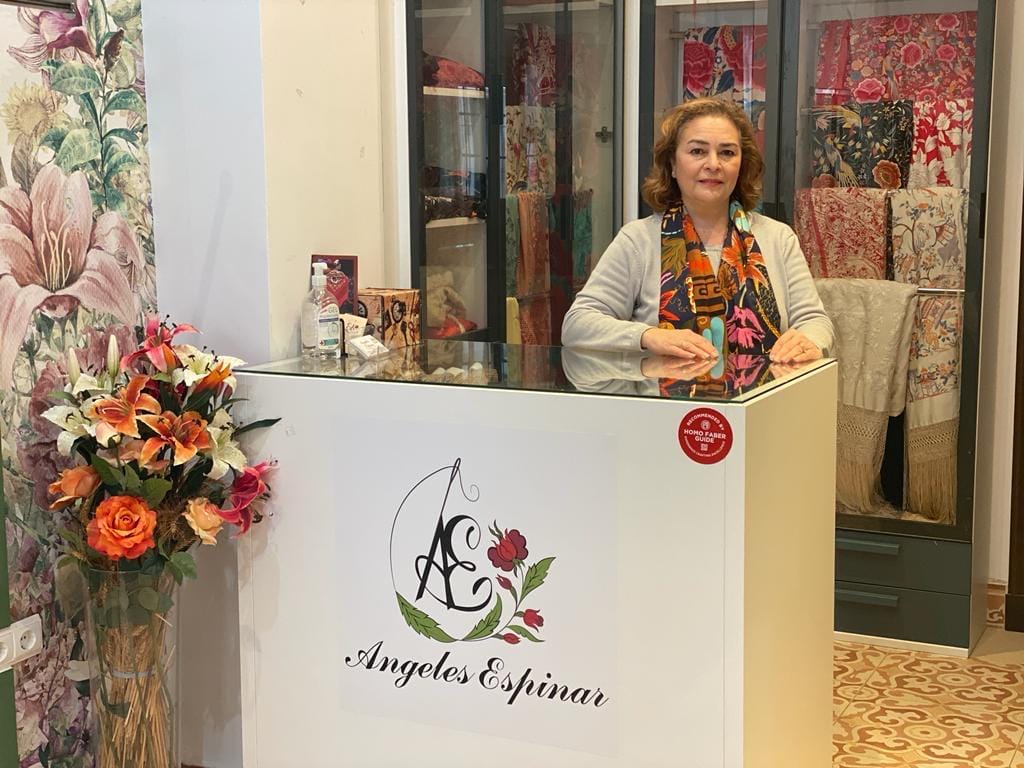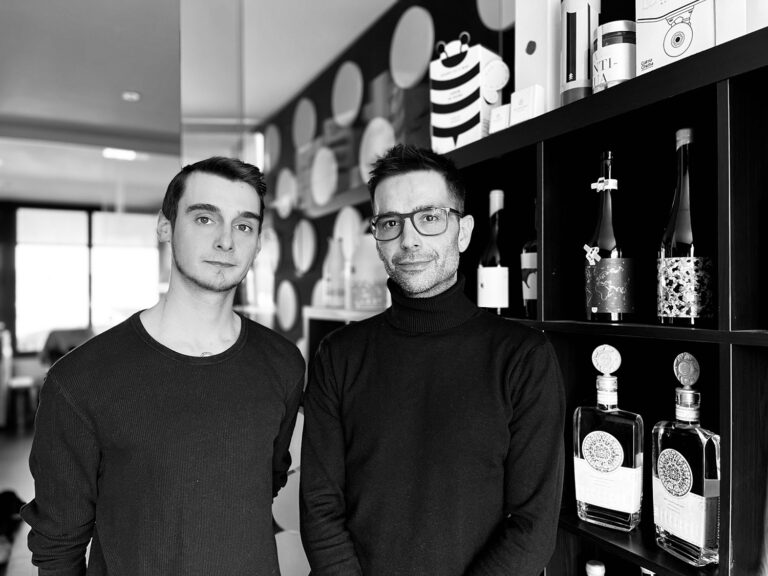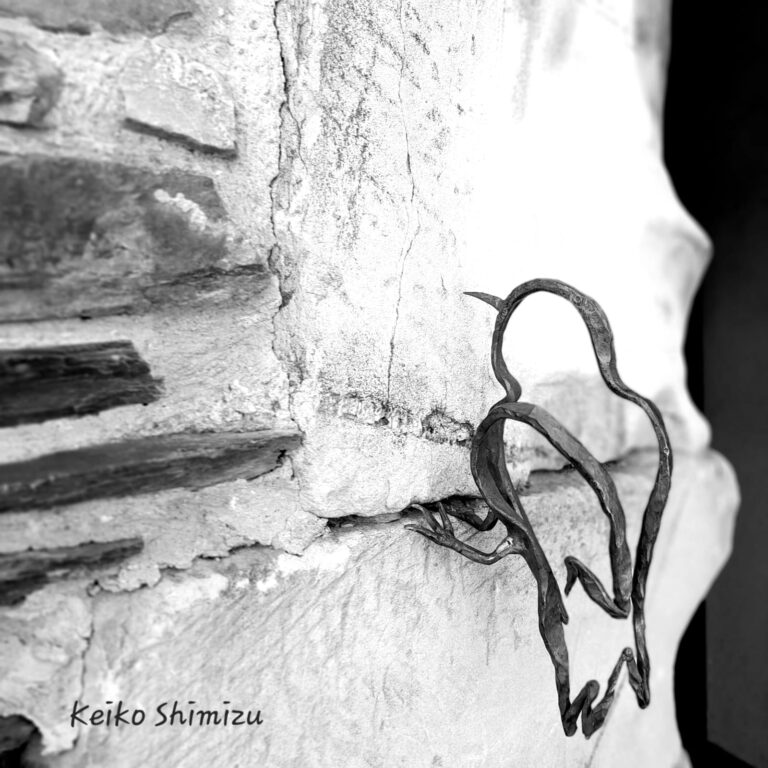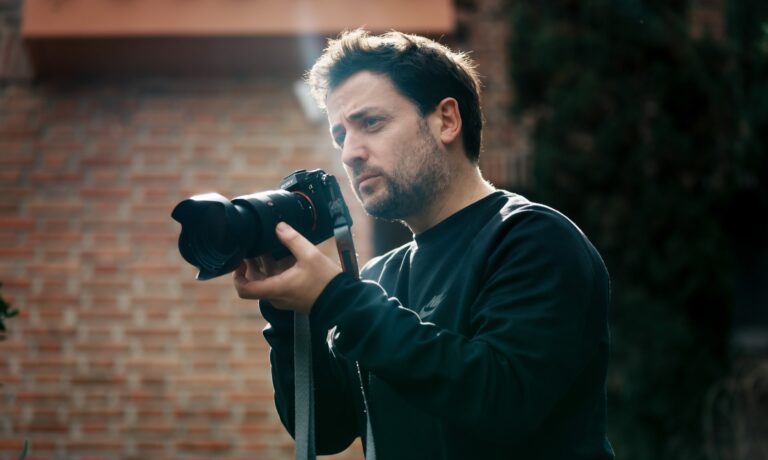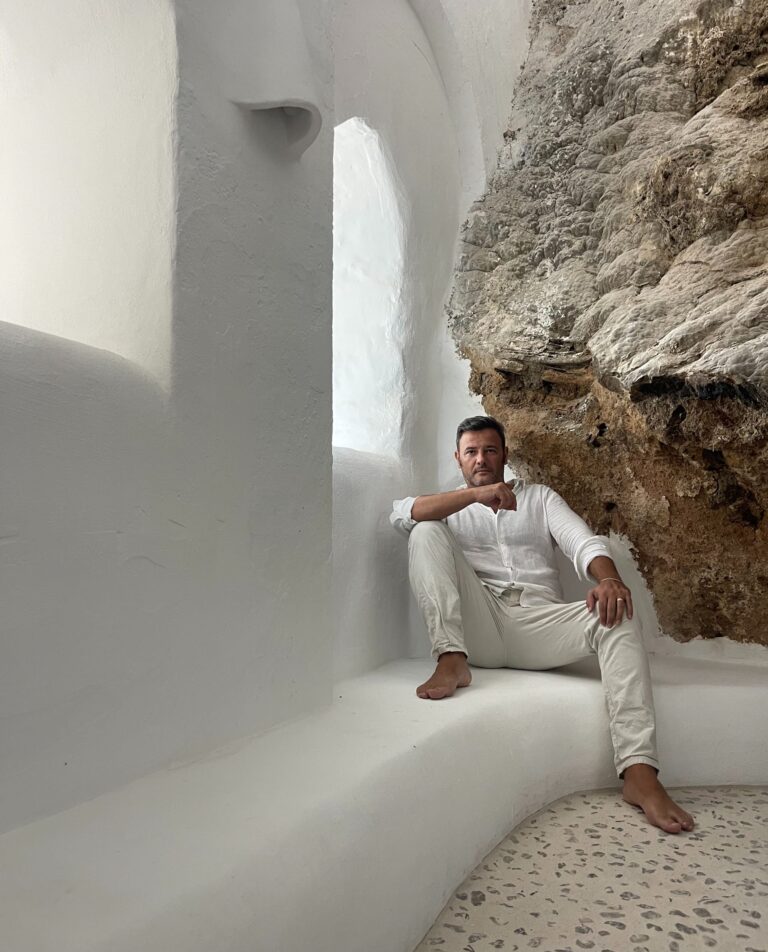Ángeles Espinar
Halfway between Seville and El Rocío is the town of Villamanrique de la Condesa, the birthplace of Ángeles Espinar and where, even today, the third generation of the family runs the artisan business of shawls and ‘mantillas’.
She has pampered the shawl so much and has improved and valued it in such a way that today it is one more garment - and well-regarded - in the broad spectrum of the fashion world. These shawls have trodden catwalks around the world and all of Spain, and even aristocrats, nobles, artists, and celebrities have one of her pieces.
Natural silks are chosen, dyes are controlled, and master embroiderers are valued. In short, a unique, striking recognizable, versatile, and high-quality Spanish artisan product is created.
In 2007, Ángeles Espinar received the Gold Medal for Merit in Fine Arts from the hands of the current king, Felipe VI, and the Ministry of Culture, for her work in preserving and disseminating the artisan heritage of shawls.
Today, her daughter, María José Sánchez Espinar, the heart, head, soul, and hands of this long-standing project, tells us a little more about her colorful job and life:
Hello María José. Do you remember the first time you saw your mother embroidering a shawl?
The truth is that I have known my mother and grandmother embroidering all my life. They embroidered tapestries first and then the shawls they made themselves, both inside the house and on the patio, taking advantage of the natural light.
Can you tell us a little about the process of creating a shawl?
Well, it starts with the drawing. Designing is my main job within our firm. We make original designs and personalize them to the client's taste. This design is transferred by tracing to the fabric, which has previously been sewn to a frame about two meters long. For this base of the shawl, we mainly use natural silks from Italy.
Once drawn and well centered on the fabric, the embroidery begins with the color patterns previously chosen for each flower. The threads used for the embroidery are skeins of rayon and I dye them by hand, in an artisanal way, so they never come out the same color, there are no two shawls alike.
Finally, the fringe or lattice is made, directly on the already embroidered fabric and is tied by hand in a macramé-style knot. There are many types of fringes depending on the size and the amount of work that each one takes.
What is the furthest place you have traveled with one of your shawls?
The truth is that I have not traveled as much as our shawls, because many times the institution organizing the parades or exhibitions is in charge of taking them. But our shawls have reached Japan, Canada, Saudi Arabia, India, China, Argentina, and the United States.
What is your favorite place in the province of Seville?
Without a doubt, my town, Villamanrique de la Condesa, between Seville and Huelva, next to the Coto de Doñana, is a quiet place surrounded by nature.
What are the main parts of a shawl?
The shawl is divided into four corners that can be repeated symmetrically or a design can be made on one side and another on the other half. The design starts at the peak and from there it opens towards the middle of the shawl, this is because in the past, ladies would wear it in a triangular shape and the design looked prettier that way. The border or fringe is what frames the piece, and the last thing to do is the fringe.
Do you wear shawls? How often and for what events do you wear them?
Yes, of course, I have a collection of old shawls and others made by us. I don't wear them very often because they are currently used more for social events, but in the past, they were an everyday warm garment.
What did you feel when Ángeles Espinar, your mother, received the Gold Medal for Merit in Fine Arts?
A great pride. It is no small thing to have the honor of being a Most Excellent Person appointed by His Majesty the King and by the Ministry of Culture and to receive this award for the work of heritage conservation. It is an award for a lifetime dedicated to maintaining the good work of this artisan trade.
What is “Espinar Antique”?
It is a line of antique shawls that we have created in response to the need to offer our clients another version of the hand-embroidered Manila shawl. They are period shawls, from the 19th century and early 20th century, which we clean and restore, giving them a second life. In this way, while preserving these wonderful antique pieces, we contribute to sustainable and reusable fashion.
In addition, we also had the idea because we had little material in stock for the clients of our small shop-workshop (most are made to order).
Is there any part of your production process that is more environmentally friendly?
In our production process, natural silks are used for the base of our shawls and crepes, and dyeing is carried out only every few months and on a small scale.
Do you have any dreams to fulfill?
Yes, to be able to contribute to creating a museum in Seville dedicated exclusively to the Manila shawl, its history, and its future.
Is there any well-known personality that you would be particularly excited to own one of your pieces?
Many socialites already have our shawls: royalty and aristocracy, actresses, dancers, singers, fashion designers… For me, any woman who likes them is worthy of wearing one of our shawls.
In this sense, our previous protagonist, The Artist, Grand Hotel of Art (Bilbao) left a question in the air for the next one. "If you could collaborate on a project with any historical or contemporary figure, who would you choose and why?”
It occurs to me that perhaps an international Spanish actress like Penélope Cruz would be a good ambassador for our embroidered pieces. Wearing a shawl or even a dress embroidered with shawl flowers would highlight a craft made in Spain, a hallmark of tradition but also an example of modern innovation in current fashion.
Can I ask you to leave a question for the next guest?
Yes, of course. Would you teach your craft to another person so that it is not lost?


